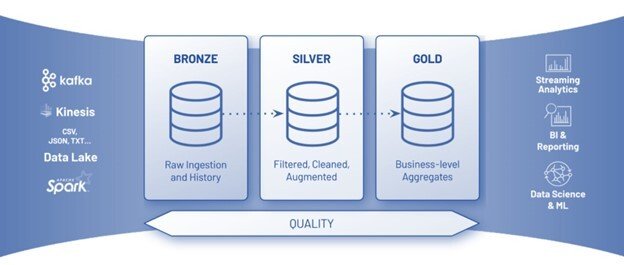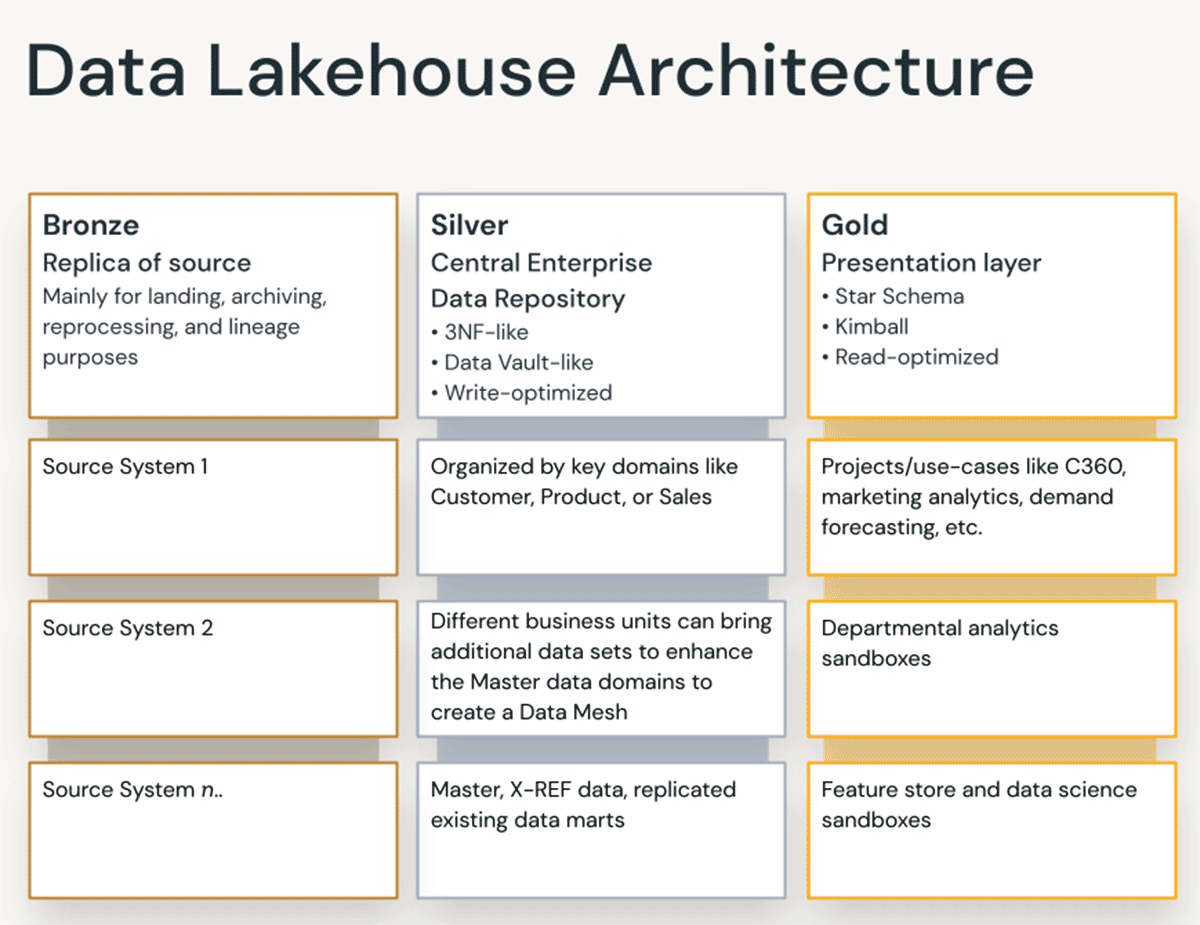Why Databricks?
When it comes to data engineering and data warehousing, many organizations turn to Databricks and Snowflake as two popular options. While both platforms have their strengths, using Databricks for data engineering and data warehousing offers key advantages over Snowflake.
Unified analytics platform
Databricks provides a unified analytics platform that seamlessly integrates data engineering, data science, and business analytics in one place. Data engineers, data scientists, and business analysts can work on the same platform, streamlining the data pipeline and accelerating time-to-value.
Batch and real-time processing
Databricks offers a powerful processing engine that handles both batch and real-time data processing. This enables you to process large volumes of data quickly and efficiently while supporting real-time data processing for use cases such as fraud detection or predictive maintenance.
Advanced AI/ML built-in
Databricks offers a wide range of machine learning and artificial intelligence capabilities unparalleled in the data warehousing marketplace. You can build and deploy advanced analytics models directly within one platform. Data engineers and data scientists collaborate on the same platform to streamline the development process and accelerate actionable insights and business value.
What if I already have Snowflake?
If you’ve already invested in Snowflake and related integration platforms such as Matillion and Fivetran, then you might be hesitant to switch. Snowflake’s virtual data warehouse is a robust tool for supporting data consumers and transitioning to a new platform could be disruptive, as it would necessitate the replacement of connection strings for BI tools and altering the user experience for ad-hoc analysis.
Nevertheless, the costs associated with data acquisition, data extraction and formatting, complex data transformations, table and data lifecycle management, and data quality pipelines in Snowflake can be disproportionately high. For clients seeking a hybrid approach to their data estate, we recommend centralizing those data management tasks with Databricks, following their medallion (bronze, silver, gold) model.
Databricks Medallion Model


Benefits of a hybrid approach
A hybrid approach provides significant advantages for optimizing your data estate.
Data Science
Data science teams benefit from a hybrid approach because data stored in the bronze and silver zones of the Databricks Lakehouse are ideally suited to their needs. Your teams can utilize popular frameworks like PyTorch, Keras, TensorFlow, SciKit, and others, as well as features from model management frameworks like MLFlow, which are native to Databricks. Data resulting from machine learning workstreams can be effortlessly written to Snowflake for consumption or processed as events to other systems for real-time action/response.
Storage Optimization
To further optimize the hybrid data estate, we recommend you save all data on the Lakehouse, as its cost-to-store/compute ratios can be significantly better than a warehouse approach, especially when cloud storage data tiering is employed, and process only the data needed for analytical and reporting workloads to Snowflake. Eliminating stale, unused tables from Snowflake can also assist with cost management, and we recommend that Snowflake customers actively review their query-history statistics to identify those tables that can be eliminated.
Integrations
Integration rationalization is another advantage of this approach. We help organizations assess their data acquisition patterns and rationalize their integration platform suites down to the bare minimum, feeding the Delta Lake. For example, Fivetran supports hundreds of data sources, including change-data-capture providers, and seamlessly writes to Databricks Delta. All data processing, encompassing transformations, enhancements, and data quality tasks, should be performed within the Databricks Delta Live Tables (DLT) framework, which optimizes data pipelines by performing transformation work in parallel on optimally sized and scaled clusters in the shortest amount of time possible. Data can then be sent to Snowflake for consumption, resulting in significant cost savings.
Vendor Management
Another major advantage is vendor management. Utilizing a hybrid approach, organizations can keep both Databricks and Snowflake focused to maintain the competitive edge, as switching costs between the platforms remain low if necessity arises.
Cloud Optimization
Aligning storage for both platforms by region, along with their associated fail-over location(s), is critical to controlling egress costs and ensuring resilience. Overall, a hybrid approach to data management that combines Databricks and Snowflake offers substantial benefits in terms of cost savings, data processing capabilities, and vendor management.
Adopting a hybrid approach to data management with Databricks and Snowflake addresses other critical concerns for data teams, such as labor management, platform complexity, and budget impacts. Isolation and separation of concerns will result in the optimal allocation of engineering labor and cost management, enabling managers to effectively manage their team’s responsibilities.
Security and access control are also of paramount importance. By isolating engineering workloads in Databricks, secured with strict service account management and limited user access, and user access workloads in Snowflake secured with its role and group management features, organizations can establish the simplest and most effective security architecture. This approach ensures that data is accessed only by those with the appropriate permissions, reducing the risk of unauthorized access and data breaches.
In summary, a hybrid approach to data management with Databricks and Snowflake presents numerous benefits for organizations aiming to optimize their data estate, including data science capabilities, integration rationalization, cost savings, and vendor management. The approach also addresses critical concerns for data teams, such as labor management and security architecture, allowing managers to effectively manage their team’s responsibilities and mitigate the risk of unauthorized access and data breaches.
The hands-on workshop and lab time gave us the confidence to move forward with the full platform migration, and the ongoing support from Blueprint ensures that our data workflows are monitored and optimized for success.”
Looking to migrate from Snowflake?
Get a comparison of Snowflake and Databricks.

